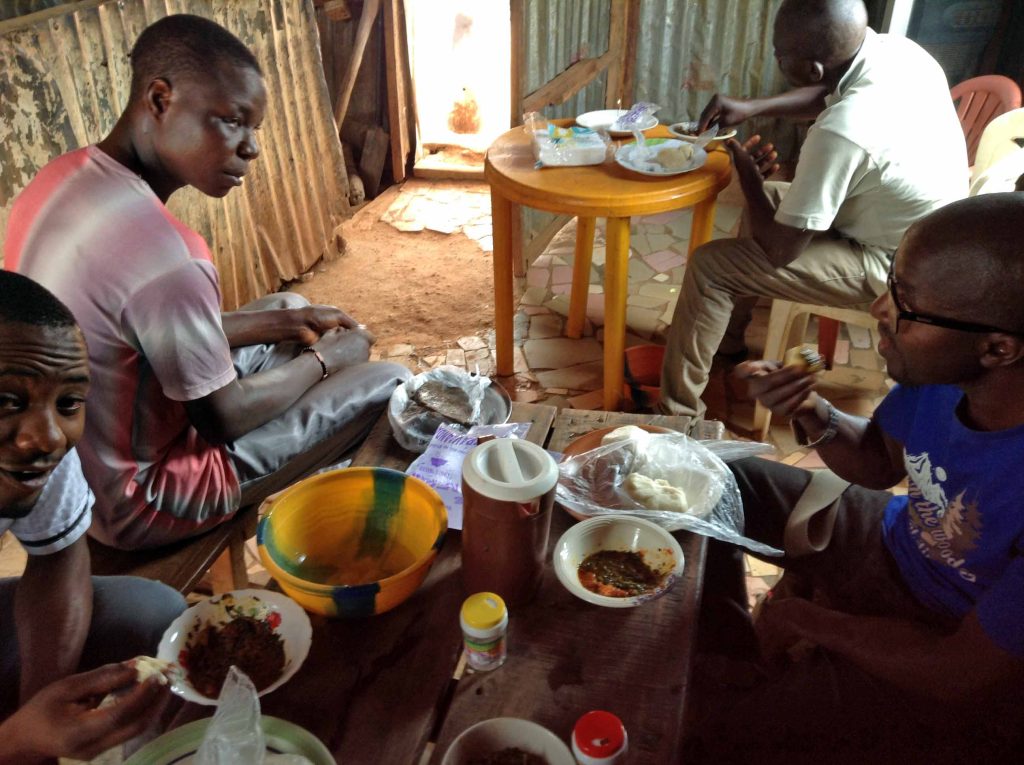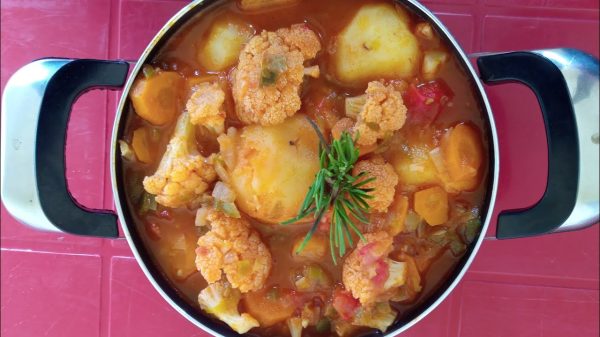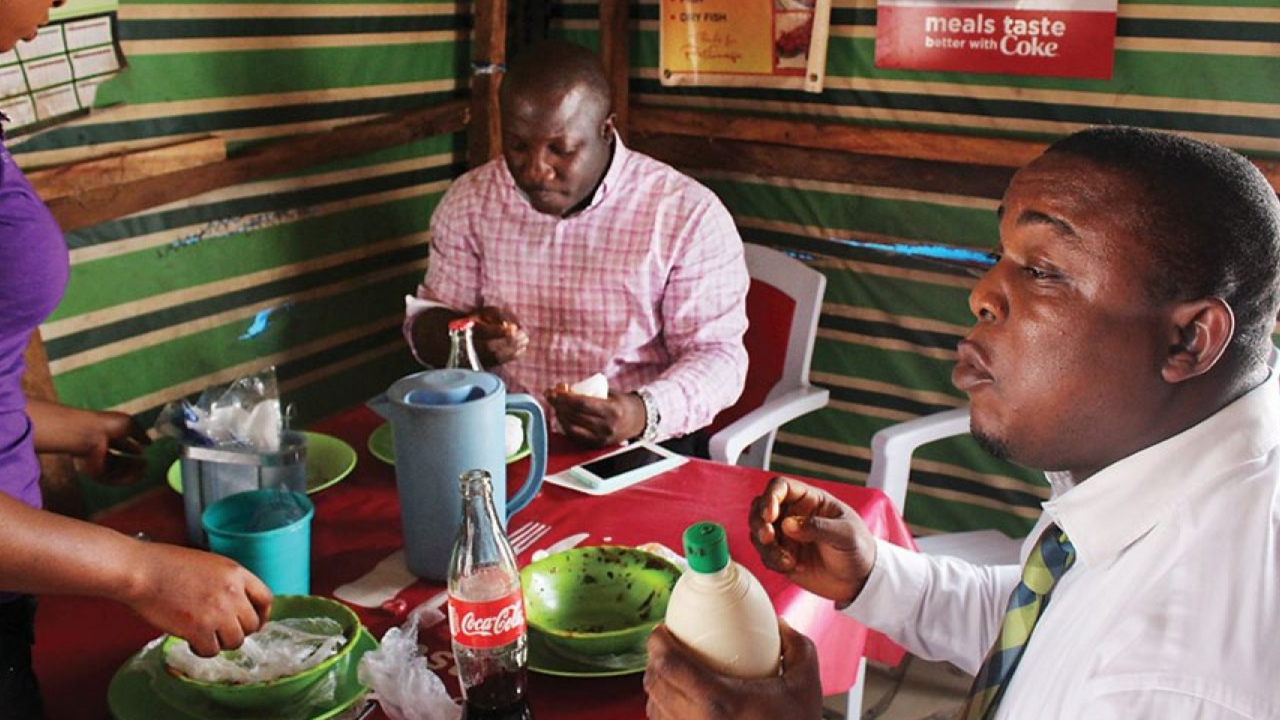Nigeria is a land brimming with vibrant culture and rich culinary traditions.
Its cuisine is not only about delicious flavors and tantalizing aromas—it’s also deeply intertwined with social customs, etiquette, and community values. For visitors who want to truly immerse themselves in the Nigerian dining experience and avoid the common pitfalls that mark a tourist, understanding these subtleties is essential.
This comprehensive guide offers an in-depth look at Nigerian dining traditions, from the art of eating “swallow” to table manners, proper chewing etiquette, and social interactions, ensuring you savour every bite like a local.
1. Embrace “Swallows” and Soups
The Heart of Nigerian Cuisine
At the heart of many Nigerian meals are “swallows”—starchy, dough-like side dishes that serve as the perfect accompaniment to rich, flavorful soups or stews. Whether it’s Fufu or pounded yam (Iyan), these staples are central to the dining experience and embody a unique way of enjoying food that many tourists might initially find unfamiliar.
Popular Swallows
- Fufu
- Fufu, a staple Nigerian swallow, is a dough-like food made from fermented cassava. It’s typically paired with various soups and stews, forming an essential part of West African cuisine.
- Pounded Yam (Iyan)
- Prepared by pounding boiled yam until it becomes stretchy and smooth, pounded yam is traditionally served with a variety of vegetable or melon seed-based soups, making it another popular choice across the country.
- Tuwo Shinkafa
- Tuwo Shinkafa is a traditional Nigerian swallow made from soft, short-grain rice cooked until mushy, then mashed into a smooth, dough-like consistency. It’s commonly enjoyed in Northern Nigeria with soups like Miyan Kuka or Miyan Taushe.

The Art of Eating Swallows
Swallows are eaten in a very particular way—a method that not only enhances the flavor but also carries cultural significance
- Right-Hand Only
- In Nigerian dining culture, it is customary to use only your right hand for eating. The left hand is reserved for personal hygiene tasks and is considered unclean for handling food. This rule reflects deep-rooted cultural and even religious beliefs, and adhering to it is crucial in blending in with locals.
- Pinch a Small Portion
- Begin by pinching off a small piece of the swallow with your right hand. The portion should be manageable and not overly large, reflecting the modest and communal nature of the meal.
- Shape It Into a Ball
- Gently roll the portion between your fingers to form a compact ball. This is an essential step in preparing your swallow for the next part of the process.
- Make a Dent
- Using your thumb, carefully press a small dent into the center of the ball. This indentation is purposefully created to act as a little edible spoon.
- Fill with Soup
- Scoop a moderate amount of the accompanying soup or stew into the dent. The soup, rich in flavor and often loaded with spices, elevates the simple swallow into a deeply satisfying dish.
- Combine and Swallow
- Bring the ball to your mouth and combine the flavors in one smooth swallow. The technique here is to ingest the mixture with minimal chewing, allowing the soup’s flavor to seamlessly blend with the texture of the swallow.
- This method of eating is not just about taste—it’s a traditional practice passed down through generations, emphasizing the unity of flavors and the communal nature of Nigerian dining.
2. Mastering Dining Etiquette
Use of One Hand
A fundamental aspect of Nigerian dining etiquette is the exclusive use of the right hand. Eating with the left hand is considered impolite and disrespectful because the left hand is traditionally associated with unclean tasks. Whether you are using your fingers to scoop up a portion of swallow or even holding a spoon in more formal settings, ensure that only your right hand is in action. This practice is a sign of respect, modesty, and cultural sensitivity.
Sequence of Eating Meat
In many Nigerian households, meat is treated as a luxury item. Because it is often more expensive or less abundant than other components of the meal, it is typically saved for the end. Starting with meat might be perceived as greedy or impatient. Instead, by enjoying meat after you have savored the staple swallows and soups, you demonstrate moderation and an appreciation for the communal spirit of the meal. This sequential eating helps maintain a balanced approach, emphasizing patience and respect for shared resources.
Communal Dining and Sharing
Nigerian dining is deeply communal. Meals are commonly served family-style, where dishes are shared from large, communal bowls or platters placed at the center of the table. Key points include
Eating from Your Section
When dining from a communal bowl, only eat from the portion directly in front of you. This helps prevent misunderstandings and respects the shared nature of the meal.
Observing Hierarchy
Typically, the most senior members or the host begin eating first. As a guest, wait for the host or the eldest person to start. This practice reinforces respect for elders and the household hierarchy.
Pre-Meal Preparations and Handwashing
Before you sit down to enjoy your meal, observe these essential pre-dining customs
- Handwashing Ritual
- Given that much of Nigerian dining involves eating with your hands, thorough handwashing before and after the meal is vital. It is not only about hygiene but also a sign of respect and readiness to participate in the communal experience.
- Gift Giving
- When invited to a Nigerian home, it is customary to bring a small gift for your host. Even if modest, this gesture is warmly received and helps build rapport.
- Seating Etiquette
- Wait for the host to show you to your seat and do not start eating until they have begun, particularly if elders or the head of the household are present.
Additional Table Manners
Here are more nuances of Nigerian dining etiquette that help you blend in
- Chew with Your Mouth Closed and Silently
- It is very important to chew with your mouth closed and in silence. Nigerians view loud chewing or chewing with an open mouth as unsophisticated, comparing such behavior to that of animals. Additionally, refrain from belching, coughing, or sneezing at the table. If you must do any of these (or if you need to clear your throat), do it away from the table or as silently as possible so as not to disturb others.
- Minimize Distractions
- Keep your phone and other distractions away during the meal. Engage in conversation and enjoy the communal atmosphere. Rushing through the meal may signal a lack of appreciation.
- Mind Your Body Language
- Avoid gestures that might be perceived as rude—such as pointing your feet toward others or the food—and maintain a respectful posture throughout the meal.

3. Savor Popular Dishes
Nigerian cuisine is celebrated for its diversity and vibrant flavors. Familiarizing yourself with some of the most beloved dishes will help you blend in seamlessly and enjoy the full spectrum of local flavors.
- Jollof Rice
- Jollof rice is arguably one of Nigeria’s most iconic dishes—a one-pot meal bursting with tomatoes, peppers, and a blend of spices. Typically, it is served alongside sides like fried plantains (dodo) or grilled meats. Depending on the setting, it may be eaten with a spoon or, in more informal environments, with your right hand. Always observe and follow the local cues.
- Moi Moi
- Moi Moi is a steamed bean pudding made from blended, peeled beans, onions, and spices. It is often served as a side dish or enjoyed on its own, showcasing the rich flavors and nutritious qualities of Nigerian ingredients.
- Suya
- Suya represents the bold side of Nigerian street food. These are spicy, grilled meat skewers, marinated in a unique blend of spices. Popular especially in the evenings and in bustling market environments, Suya is a must-try for those looking to experience the full range of Nigerian flavors.
4. Beyond the Meal Social Customs and Table Dynamics
Dining in Nigeria is as much about the social experience as it is about the food. The rituals surrounding the meal are designed to promote unity, respect, and a sense of community.
Engaging with Locals
Conversational Etiquette
Nigerians are known for their warm hospitality. Engage with your hosts and fellow diners by asking questions about the food and the customs. Your genuine curiosity is often met with enthusiasm and deeper insights into the culture.
- Observing the Pace
- Meals are typically enjoyed slowly with ample time for conversation. Rushing through your meal can be perceived as impolite and may disrupt the communal atmosphere.
- Following the Host’s Lead
- Always wait for the host or the most senior person to begin before you start eating. This practice underscores respect for hierarchy and tradition.
- Offer to Help Tidy Up
- Another important aspect of Nigerian dining etiquette is your willingness to contribute even after the meal. When the meal is over, and if you are invited to dine in someone’s home or a communal setting, offer to help tidy up the table. Even if your offer is initially declined as a gesture of hospitality, insist gently without coming off as rude. If the host continues to refuse, then politely back down. This small act of service is appreciated as it shows your respect and commitment to the shared experience.
- The Role of Food Presentation
- Food presentation in Nigeria is both functional and symbolic. Swallows are typically shaped into smooth, round balls—sometimes even wrapped in plastic to maintain their form—while soups and stews are served in vibrant communal bowls. This method reinforces the communal nature of the meal and highlights the importance of sharing and togetherness.

5. Engage with and Learn from the Locals
No guide is complete without acknowledging the warmth and generosity of the Nigerian people. When dining in Nigeria, consider these tips to further enrich your experience
- Ask Questions
- Inquire about the origin of a dish, the proper way to eat it, or the best local spots for authentic cuisine. Locals are generally happy to share their knowledge and offer personal recommendations.
- Show Appreciation
- A sincere “thank you” or compliment goes a long way in showing respect and gratitude to your host or the chef for their efforts.
- Participate Actively
- Engage in conversations, learn a few words in the local language, and immerse yourself fully in the social rituals of the meal. Your active participation will be warmly received and will deepen your cultural experience.
Dining like a local in Nigeria is an immersive journey that extends far beyond just the food. It is an experience steeped in tradition, respect, and community. By embracing the art of eating swallows with care—pinching, shaping, denting, and filling them with flavorful soup—you not only enjoy a rich culinary experience but also honor a longstanding tradition. Coupled with important dining etiquettes such as using only the right hand, saving meat for the end to avoid any perception of greed, and adhering to refined table manners (chewing silently with your mouth closed and refraining from disruptive actions like belching, coughing, or sneezing), you can truly dine like a Nigerian.
Additionally, showing your willingness to contribute by offering to tidy up after the meal—even if initially declined—further demonstrates your respect for the communal experience. By following these detailed guidelines—from the pre-meal rituals and handwashing to the respectful sequence of eating and post-meal courtesies—you not only savor the authentic flavors of Nigerian cuisine but also build meaningful connections with the people. Enjoy every bite, every gesture, and every moment at the Nigerian table, and you will effortlessly blend in as a true local.
Subscribe to our Newsletter
Stay updated with the latest trends in African Pop Culture!























